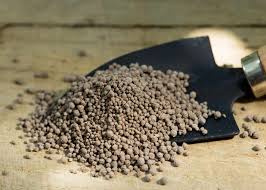
Des . 02, 2024 06:59 Back to list
spreading nitrogen fertilizer
Spreading Nitrogen Fertilizer A Key to Enhanced Agricultural Productivity
In the quest for sustainable and productive agriculture, the use of nitrogen fertilizer has emerged as a cornerstone practice for farmers worldwide. Nitrogen is an essential nutrient that plays a critical role in plant growth, influencing crop yields significantly. Spreading nitrogen fertilizer effectively and efficiently can maximize its benefits while minimizing potential drawbacks related to environmental impact.
The Importance of Nitrogen in Agriculture
Nitrogen is a primary component of amino acids, the building blocks of proteins, and is crucial for the synthesis of chlorophyll, which is necessary for photosynthesis. Without adequate nitrogen, plants exhibit stunted growth, yellowing leaves, and ultimately, reduced yields. For this reason, nitrogen fertilizers are widely used to replenish soil nutrients, especially in agricultural systems that deplete them over time.
Types of Nitrogen Fertilizers
Nitrogen fertilizers come in various forms, each with unique characteristics. The most common types include
1. Urea This is one of the most widely used nitrogen fertilizers due to its high nitrogen content (around 46%). Urea is often converted into ammonium, which plants can absorb.
2. Ammonium Nitrate This fertilizer combines ammonium and nitrate forms of nitrogen, offering plants immediate and long-lasting sources of nutrients.
3. Calcium Nitrate Alongside nitrogen, this fertilizer supplies calcium, an essential nutrient for plant structure and growth.
Each type has specific application methods and considerations, making it essential for farmers to choose the right fertilizer based on crop type, soil conditions, and climatic factors.
spreading nitrogen fertilizer

Techniques for Spreading Nitrogen Fertilizer
The method of application significantly influences the effectiveness of nitrogen fertilizers. The main techniques include
1. Broadcast Spreading This involves spreading fertilizer evenly across the soil surface. While it is quick and covers large areas, it can lead to nutrient loss through volatilization or runoff if not incorporated into the soil promptly.
2. Banding This technique places fertilizer in strips beside or below the seed row. Banding minimizes nutrient loss and enhances availability to the crop roots, making it a more efficient method than broadcasting in many scenarios.
3. Foliar Application In certain instances, nitrogen can be applied directly to plant leaves. This method allows for quick absorption and is particularly beneficial during critical growth stages.
4. Drip Irrigation Fertilizers can be mixed with irrigation water, allowing for precise application and reduced waste. This method is increasingly popular in high-value crops where nutrient management is crucial.
Environmental Considerations
While nitrogen fertilizers are essential for crop production, their excessive use can have detrimental environmental impacts. Nitrogen runoff can lead to water pollution, causing algal blooms that deplete oxygen in water bodies and harm aquatic life. Moreover, volatilization of nitrogen can contribute to greenhouse gas emissions.
To mitigate these issues, farmers are encouraged to adopt best management practices. This includes soil testing to determine the appropriate nitrogen needs, using controlled-release fertilizers, and employing strategies such as cover cropping to improve nitrogen uptake and reduce leaching.
Conclusion
Spreading nitrogen fertilizer is a vital agricultural practice that can significantly enhance crop yields and food production. However, it is crucial to approach its use judiciously to balance productivity with environmental sustainability. By employing efficient application methods and adhering to best practices, farmers can ensure that they maximize the benefits of nitrogen fertilizers while minimizing adverse effects on the environment, ultimately leading to a more sustainable agricultural future.
-
10 10 10 Fertilizer Organic—Balanced NPK for All Plants
NewsJul.30,2025
-
Premium 10 10 10 Fertilizer Organic for Balanced Plant Growth
NewsJul.29,2025
-
Premium 10 10 10 Fertilizer Organic for Balanced Plant Growth
NewsJul.29,2025
-
Premium 10 10 10 Fertilizer Organic for Balanced Plant Growth
NewsJul.29,2025
-
50 Pound Bags of 13-13-13 Fertilizer for All Plants – Bulk & Organic Options
NewsJul.28,2025
-
High-Efficiency 15-30-15 Granular Fertilizer for Healthy Crops
NewsJul.28,2025
